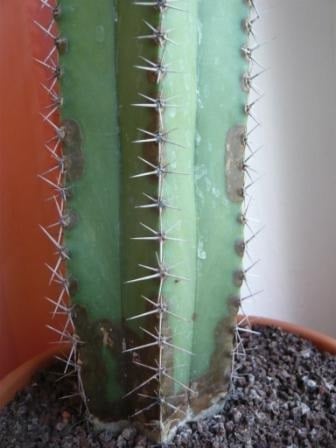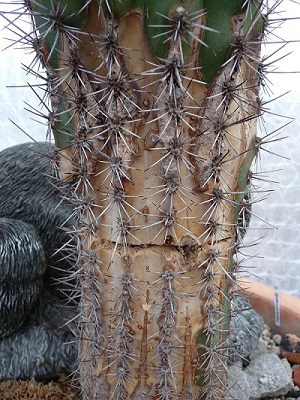Brown Spots on Cactus Plants: What You Need to Know
It can be disheartening to discover that your beloved cactus has brown spots, but fear not, we’re here to help you understand and tackle this common problem. There are different reasons why this happens, and it’s usually because we might be making some mistakes in taking care of them. It’s not often that diseases or pests are to blame. In this blog, we’ll explain the most common causes of brown spots and give you some helpful tips on what you can do to fix the problem. So, let’s dive in and discover the secrets to keeping your cactus plants happy and spot-free!

Care Mistakes that Cause Brown Spots
One common question cactus owners ask is, ‘Why does my cactus have brown spots?’ Let’s unravel the mystery together!
When we don’t take care of our cacti properly, they let us know with those pesky brown spots on their prickly skin. It’s like their way of saying, “Hey, something’s not right here!” There are a couple of common care mistakes that can lead to cactus with brown spots:
- Nutrient deficiency: Cacti need nutrients too! Make sure to fertilize them every other time you water them between May and September.
- Waterlogging: Cacti like to dry out between watering sessions, especially during their growing period. Let the soil almost completely dry out before giving them a good drink.
- Incorrect overwintering: During the winter months from November to February, cacti enjoy a bright and cool environment. Place them in a spot where the temperature is around 41 to 54 degrees Fahrenheit and go easy on the watering.
Now, even though cacti love sunshine, they can still get sunburned. Imagine that! When you bring your cacti back to their sunny spot on the windowsill after winter, give them some time to adjust. Let them hang out in a partially shaded spot for about 8 to 10 days before exposing them to full sun. This is also important if you keep them on a balcony in May.
Pests that Leave Brown Spots on Cacti
If you’ve been taking good care of your cactus and the brown spots still won’t go away, it’s time to investigate pest infestations. Some annoying insects like to feast on cacti and leave behind those brown spots. Some common culprits include stinging and sucking insects, spider mites, scale insects, and aphids.
Don’t worry, you can fight back! Let’s explore some effective strategies on how to get rid of brown spots on cactus, so your plant can regain its vibrant appearance:
- Scale insects: Dab them with cotton swabs soaked in alcohol or dust them with diatomaceous earth.
- Spider mites and aphids: Spray them with a classic soft soap solution. Show those little buggers who’s boss!
In some cases, it might be necessary to go all-out and put the infested cactus in a sealed plastic bag for 3 to 5 days. By doing this, you’re basically cutting off the oxygen supply and giving those pests a taste of their own medicine!
Read also:
How to Get Rid of Cactus Bugs
Pro Tip:
Have you ever noticed your cactus starting to cork? Let’s take a closer look at this fascinating phenomenon known as cactus corking.

Sometimes, when cacti get older, they go through a natural process called corking. It’s like they’re turning into little wooden plants! This can be seen by the appearance of brown spots on them. On the other hand, young cacti cork when the humidity in the air is too high or when they’re watered with cold, hard tap water. And let’s not forget about sunburn! When a cactus gets too much sun, its skin becomes corked too. It’s like a protective shield for them.
